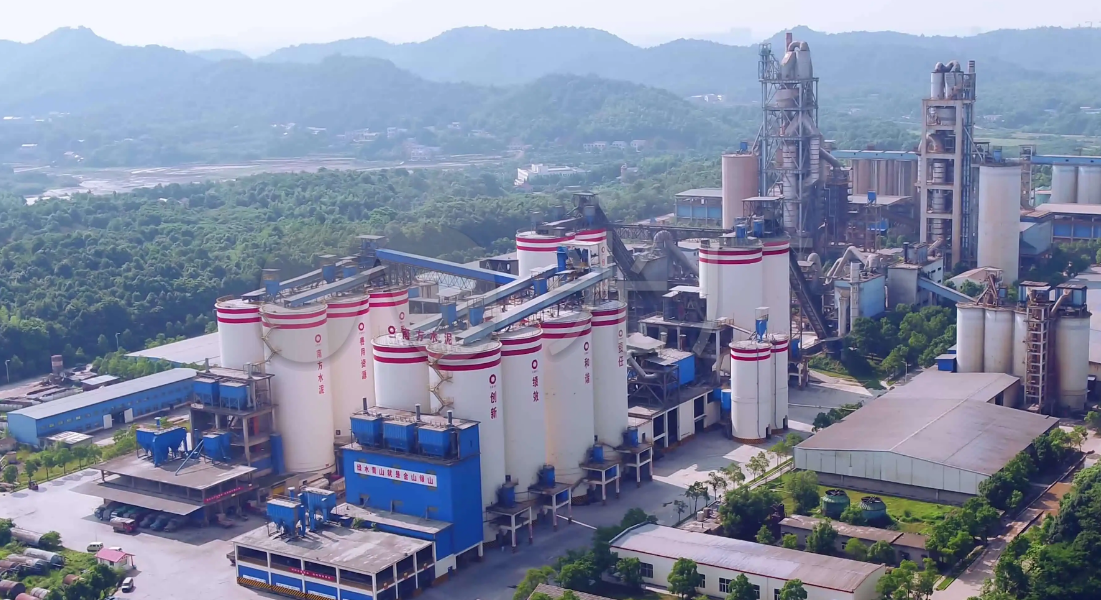Development of chemical industry in China: Current situation and problems
With the continuous development of chemical production technology, the types of chemical products in China are diversified, and the production capacity is constantly improving. At present, the scale of China's chemical industry has accounted for 20% of the world market, and the level of chemical output value remains in the world's leading.
Around 2018, the chemical industry entered a destocking cycle, and industry profits declined. Affected by the supply chain crisis brought about by the novel coronavirus epidemic, the downstream demand for chemical products relaxed in 2021, and the transaction volume increased significantly, and then fell sharply in 2022. This is because excluding the impact of the epidemic factors, the chemical industry is still in a downward cycle, and destocking has not ended.
On the other hand, the chemical industry investment and export growth is good. In 2022, investment in the manufacturing of chemical raw materials and chemical products increased by 19% year-on-year, 7.4 percentage points higher than the industrial average. According to the data of the General Administration of Customs, the trade structure of the chemical industry continued to improve, the total export of organic chemicals was 80.7 billion US dollars, an increase of 17%, and the trade surplus was 29 billion US dollars, an increase of 216%; The total export volume of inorganic chemicals was 39.4 billion US dollars, an increase of 68%, and the trade surplus was 13.5 billion US dollars, an increase of 57%. Synthetic resin exports totaled $25 billion, up 4% year-on-year, and the trade deficit was $24.9 billion, down 22% year-on-year.

Industry problem: big but not excellent, urgent transformation
China's chemical industry started early, but limited by the early national economic conditions of new China, the chemical industry has extensive development, slow technological evolution, and there are still many problems.
The speed of technological development lags behind the scale of industry
Taking petrochemical and chemical industry as an example, at present, China's ethylene, aromatics and other complete sets of technologies and equipment are basically independent, and coal chemical and other technologies have made breakthroughs, but still lack some key core technologies and downstream supporting technologies. Taking polyethylene as an example, the technology dependence on foreign countries exceeds 90%, and the industry is in the catch-up period of relying on the introduction of technology and large-scale investment and construction, and the independent innovation ability is not strong. On the one hand, companies are not investing enough in research and development. The R&D investment of large international petrochemical companies accounts for about 3% of sales revenue, while China's petrochemical enterprises only account for about 1%. On the other hand, the current mechanism can not effectively stimulate the enthusiasm of enterprise researchers to carry out application-oriented original basic research, and enterprise research and development is basically limited to running and digesting.
In addition, in terms of high-end products, China's chemical industry is highly dependent on foreign countries, and its independent security capacity needs to be improved. At present, China's high-end polyolefin, engineering plastics, high-performance synthetic rubber, film materials, high-purity electronic chemicals and other self-sufficiency rate is low, of which octene copolymer polyethylene, polyolefin elastomers and other high-end polyolefin are basically dependent on imports, polycarbonate, polyformaldehyde, polyphenyl ether and other engineering plastics self-sufficiency rate is less than 50%, structural deficiency and excess exist at the same time. In addition, the self-sufficiency rate of raw materials and monomer and advanced equipment required for the production of new materials in China also needs to be improved.

The industrial scale is large, but the international market competitiveness is weak
In the past 20 years, the scale of China's chemical industry has developed rapidly. In 2021, seven Chinese companies will enter the top 50 global chemical companies list. At present, China has become the world's main production base of chemicals, the production capacity of most bulk chemicals is the first in the world, such as MDI, propylene, acrylic acid, maleic anhydride, butanone, PTA, PX, vinyl acetate, glass fiber, etc., the production capacity of some chemicals is in the process of rapid growth, such as PDH, PBAT, PLA, polyethylene, polypropylene, etc.
However, there is still a huge gap between China's chemical industry and the international industry in frontier technology, mainly reflected in research and development and large-scale chemical projects. China's fine chemicals mainly use foreign formulations, the process technology of domestic enterprises is immature, most of the process only stays in the experimental project, and only some central enterprises have the capital to test, the process is difficult to get the opportunity to debut; In the field of large chemical industry, such as refining and chemical integration projects, there are many places in China to use foreign technology, such as large ethylene, aromatics combined, atmospheric and vacuum pressure and catalytic cracking processes, many companies use Honeywell technology or catalyst provided in the integration project, and patented technology also needs to be purchased from international giants. As a result, China's own technology cannot be applied on a large scale, and there is no actual production and operation data as a reference for improvement and correction.
Dual-line transformation becomes a strategic trend
Digital transformation and low-carbon transformation are the two major macro strategic issues that industries will face in the coming decades. The chemical industry has two attributes of technology intensive and high energy consumption and high emission. Digital transformation and low-carbon transformation are of great significance to the chemical industry.

From the perspective of low-carbon transition, the carbon emissions of the chemical industry are on the rise with the rapid growth of production capacity. In 2020, the total energy consumption of China's petrochemical and chemical industry will reach 6.85×108t of standard coal, an increase of 59.7% compared with 2010, and the total carbon emissions will reach 1.378 billion tons, second only to the metallurgical industry in industrial carbon emissions.
On the one hand, the demand for chemicals and new materials continues to grow rapidly, driving the rapid growth of production capacity. During the "14th Five-Year Plan" period, China will still have a number of refining and chemical integration projects completed and put into operation, and it is expected that in 2025, the total ethylene production capacity will break through 5000×104t/a, becoming the world's first petrochemical country. On the other hand, in order to achieve China's commitment to achieve carbon peak by 2030 and carbon neutrality by 2060, the green and low-carbon development of the industry is an inevitable choice.
From the perspective of digital transformation, the "Process industry digital transformation Market Survey" report pointed out that in the past decade, the digital construction of the domestic process industry has developed rapidly, and by 2020, only less than 10% of the process enterprises in the country have not involved in the topic of digital and intelligent manufacturing, and nearly 90% of the enterprises have carried out digital-related work. Nearly half of them have made digital transformation one of their major strategies.

At present, the focus of digital systematic construction of domestic chemical industry is to promote the comprehensive integration and deepening application of enterprise production management system and operation management system. In the aspect of vertical integration, the effective integration of management system and control system and the integration and sharing of data information are realized. In terms of production process management, improve the efficiency of process control system, and the application of APC technology in chemical industry to achieve smooth operation of enterprise production process and improve energy utilization efficiency; At the level of production and operation, improve the application penetration rate, coverage and application depth of production execution system (MES). In terms of horizontal integration, it promotes the data connectivity of raw material procurement, production and manufacturing process, logistics and warehousing, and realizes the goals of product traceability, manufacturing process monitoring, and real-time benefit calculation.
- EMERSON
- Honeywell
- CTI
- Rolls-Royce
- General Electric
- Woodward
- Yaskawa
- xYCOM
- Motorola
- Siemens
- Rockwell
- ABB
- B&R
- HIMA
- Construction site
- electricity
- Automobile market
- PLC
- DCS
- Motor drivers
- VSD
- Implications
- cement
- CO2
- CEM
- methane
- Artificial intelligence
- Titanic
- Solar energy
- Hydrogen fuel cell
- Hydrogen and fuel cells
- Hydrogen and oxygen fuel cells
- tyre
- Chemical fiber
- dynamo
- corpuscle
- Pulp and paper
- printing
- fossil
- FANUC
- Food and beverage
- Life science
- Sewage treatment
- Personal care
- electricity
- boats
- infrastructure
- Automobile industry
- metallurgy
- Nuclear power generation
- Geothermal power generation
- Water and wastewater
- Infrastructure construction
- Mine hazard
- steel
- papermaking
- Natural gas industry
- Infrastructure construction
- Power and energy
- Rubber and plastic
- Renewable energy
- pharmacy
- mining
- Plastic industry
- Schneider
- Kongsberg
- NI
- Wind energy
- International petroleum
- International new energy network
- gas
- WATLOW
- ProSoft
- SEW
- wind
- ADVANCED
- Reliance
- YOKOGAWA
- TRICONEX
- FOXBORO
- METSO
- MAN
- Advantest
- ADVANCED
- ALSTOM
- Control Wave
- AB
- AMAT
- STUDER
- KONGSBERG
- MOTOROLA
- DANAHER MOTION
- Bently
- Galil
- EATON
- MOLEX
- Triconex
- DEIF
- B&W
- ZYGO
- Aerotech
- DANFOSS
- KOLLMORGEN
- Beijer
- Endress+Hauser
- MOOG
- KB
- Moxa
- Rexroth
- YAMAHA
- Johnson
- Westinghouse
- WAGO
- TOSHIBA
- TEKTRONIX


Email:wang@kongjiangauto.com



































































































































